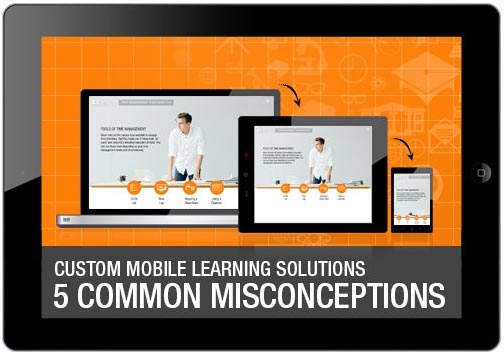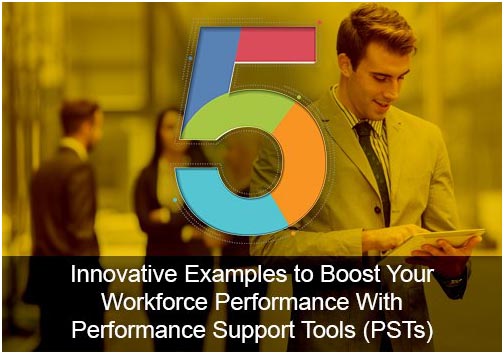
To make it more effective for today’s remote work paradigm, it is vital for organizations to embrace hybrid onboarding. This article reviews the key onboarding training challenges and covers strategies to address them.
What Are the Challenges Organizations Face with Onboarding New Employees?
Aside from the screening and selection process, onboarding is the first real taste that new employees get of life within your organization. This is where employers set the stage for what they (employees) might expect during their career with the company. And it’s also an opportunity for employees to show their “best self” to their managers, supervisors, and teammates.
Ideally, no employer likes to onboard a bad hire. Unfortunately, 52% of bad hires are detected only after new hires are onboarded, and 6% during onboarding training (Source: The True Cost of Bad Hires, BHG).
Given how critical onboarding is to the employer-employee relationship, it’s vital to get it right, but organizations (and new hires) face several challenges:
- Challenges with new employee retention: The post-pandemic Great Resignation and the Grand Reshuffle saw 4.3 million workers quit or change jobs in January 2022 (Source: The Washington Post). According to Brandon Hall Group, 51% of organizations see new hire attritions within the first 6 months of their employment, while the Willis Towers Watson’s 2022 Global Benefits Attitudes Survey reveals that 44 percent of employees are “job seekers” – actively seeking new positions. Employee retention is a key challenge for employers.
- Remote/Hybrid workforce onboarding challenges: A shift to Work From Home (WFH) has created a new work paradigm – remote/hybrid working. Without hybrid onboarding, integrating new hires in this new environment is proving to be particularly challenging.
- Hybrid work has created a diverse workforce (DEI challenges): Today’s workforce is more diverse than just a few years ago. COVID-induced hybrid working has exacerbatedexisting workplace inequalities. With certain groups of workers disproportionately impacted by remote work, onboarding in this environment poses additional diversity, equity, and inclusion (DEI) challenges.
So, what are the implications of these challenges for the workforce? If employers wish to successfully navigate the challenges like the Great Resignation and Reshuffle, they must focus on the long-term retention of hew hires. These challenges highlight the urgent need to reimagine hybrid induction and onboarding training.
How Do You Reimagine Induction and Onboarding in the Changing Workplace Dynamics?
Remote working is here to stay! One in four employees surveyed said they’d quit if remote work is no longer available. Given the scale of a shift toward hybrid work, organizations must reconsider their induction and onboarding strategies. And that means rethinking how induction works.
Organizations can reimagine their induction and onboarding strategies, and pivot to hybrid onboarding, by keeping the following in mind:
Have a preboarding process and start before the employees’ first day:
Onboarding training best practices recommend that HR initiates the integration process even before the employees’ first day at work. This approach, called preboarding, will help save a lot of time and stress on the formal onboarding date.
Preboarding ensures hybrid workers review much of the information, complete pre-processes (Organizational Intro, Mission, Values, chain-of-command, log-in profiles, shared drives and folders, user-IDs, physical access credentials for in-person visits), and submit all necessary “paperwork” before they log-in/show up for their initial onboarding session.
- The need to make training purposeful, flexible, and agile: Virtual employees define their own learning schedules, and they prefer learning on the go. Knowledge workers also prefer goal-oriented learning that’s purpose-directed, for example, training that enhances performance, helps them do things better and more effectively, or teaches them new skills they can use, as opposed to “ticking” a training box.
- Enhance the onboarding experience for a hybrid workforce by designing journeys: New hire induction and onboarding are part of the larger journey of assimilating new employees into the organization. The extended onboarding journey typically begins once an employment contract is signed, flows into pre-boarding procedures (day 1), and then continues through induction and orientation over the next few weeks/months on the job.
Hybrid workplace HR teams must tailor their hybrid onboarding processes to deliver a seamless onboarding journey, beginning from induction and extending through successful integration into the team.
Build comprehensive roadmaps to improve new hire retention/integration and performance:
- 30-60-90 plan (first 100 days): The previously quoted Brandon Hall study underlines the need to closely monitor the onboarding and integration process for at least the initial period of onboarding – or else employees may quit within the first 6 months. It is therefore important to have short-term planning milestones to monitor performance and ensure a smooth integration result.
- Longer roadmaps that last for 6-12 months: Research has linked greater on-the-job learning to higher employee retention rates, better performance, and a more satisfied workforce. It’s important to also, therefore, add comprehensive Learning and Performance milestones beyond the initial 6-month period as part of the ongoing onboarding training process.
- When building your roadmap, keep the following objectives in mind:
- Help new hires quickly settle into a new role: Speed is essential. The longer an integration process “drags” on, the greater the likelihood an employee leaves the company.
- Help them gain an understanding of their responsibilities: Onboarding training must result in a clear understanding of expectations, roles, and responsibilities.
- Help them adapt and integrate organizational culture: With virtual workforces more diverse than ever, the hybrid onboarding process needs to focus on effectively integrating and assimilating new hires, with diverse backgrounds and skills, into the organizational culture.
- Create an environment where they can thrive and become productive quickly (Time-to-productivity): With proper training, coaching, mentoring, and L&P support systems in place, virtual new hires can integrate faster, become productive members of a team quicker, and have longer careers with the company.
- Create psychological safety: Due to time and distance challenges, remote work can be specially stressful, often leading to quits and resignations. Your roadmap must allow for appropriate mental, physiological, and emotional support to encourage employee retention.
Elevate your hybrid workforce training programs:
Here are six tactics to help you elevate your hybrid onboarding strategy:
- Assisting trainers/managers with hybrid induction and onboarding: Because hybrid work may (potentially) require employees to also attend in-person sessions at the office, it’s important to address those aspects during induction and onboarding.
- Investing in an L&P Ecosystem: Investing in Learning & Performance Ecosystems ensures that, once onboarding is complete, there’s a framework in place for your hybrid workforce to pursue a journey of continuous learning and development. L&P Ecosystems act as a guidepost to fuel ongoing organizational growth.
- Leveraging social learning: Because hybrid employees are dispersed (geographically, and by time and distance) from traditional onboarding training support systems, L&D leaders can leverage social learning to provide such support. Enabling mobile onboarding processes, supported by learning apps, also helps with group-based learning. Social learning provides hybrid employees access to learning communities and social learning portals, that they can tap into for specific learning topics, during (and beyond) their onboarding journey.
- Immersive learning: Because onboarding sets the tone for what employees may expect during their time with the organization, it’s important to “spice up” that experience for the new hire. Unfortunately, it’s challenging to keep hybrid learners engaged. Immersive learning as part of hybrid onboarding strategies, such as gamification, scenario based learning, story based learning, and VR/AR and 3D Simulations, helps bridge that gap.
- Blended learning for coaching/mentoring/feedback: Onboarding is a critical stage in the new hire’s time with the organization. At times, hybrid employees may desire more mentoring, coaching, and feedback, than had they been at the office, and in person. A blended learning approach to onboarding, using a mix of Instructor-Led and Virtual Instructor-Led Training (ILT/VILT), may prove more effective in such cases than fully self-regulated learning.
- DEI training: Ensure that your hybrid onboarding program also includes aspects of Diversity, Equity, and Inclusion (DEI) training. DEI challenges may manifest themselves more so in a hybrid environment because staff, managers, and colleagues are dispersed and separated by time and distance. In such an environment, it’s easy for preconceived biases to creep into the workplace. A well-designed DEI program drives positive behavioral change and ensures employees feel appreciated and included as part of the workplace.
Parting Thoughts
By all accounts, the new hybrid work model is here to stay. As such, it behooves L&D specialists and people leaders to reimagine their induction and onboarding training programs to reflect this new reality. The time and distance paradigm, created in hybrid workplaces, makes it more challenging to engage new hires. The result – a greater percentage of new hires quit.
Want to learn how to transform your face-to-face induction and onboarding programs to a virtual mode effectively?
Download our eBook: The Advanced Guide To Virtual Induction And Onboarding Training For Your Remote Employees



